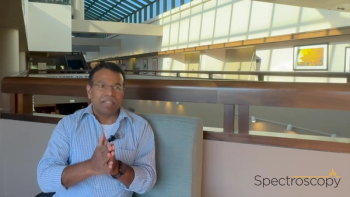
Reimer, McLafferty, Hodges and Mendelsohn Receive Top Awards at EAS
At the 2012 Eastern Analytical Symposium (EAS), held between the 12th and 15th of November in Somerset, New Jersey, USA, four major awards were given to distinguished scientists working within the field of spectroscopy.
At the 2012 Eastern Analytical Symposium (EAS), held between the 12th and 15th of November in Somerset, New Jersey, four major awards were given to distinguished scientists working within the field of spectroscopy. The recipients each received a plaque and the opportunity to present their research at an awards symposium in their honor.
The EAS Award for Outstanding Achievements in Magnetic Resonance was given to Jeffrey Reimer, professor of chemical and biomolecular engineering at University of California-Berkeley, California. Throughout his career Reimer has made a range of contributions to the development of spectroscopy applications in materials research. He established an internationally recognized research laboratory at Berkeley that focuses on the application of (electron paramagnetic resonance (EPR) and nuclear magnetic resonance (NMR) spectroscopy to materials physics and chemistry. Reimer’s present research contributions include a range of materials studies, from fuel cell membranes and electrocatalysts to semiconducting materials for energy capture. He commented: "The magnetic resonance community demands a great deal from its researchers, yet remains a place that is friendly to students. I am pleased to receive this award on behalf of the talented students and postdocs that have enriched my life so much."
The EAS Award for Outstanding Achievements in Mass Spectrometry was presented to Fred W. McLafferty, professor emeritus of chemistry at Cornell University, New York. McLafferty is hailed as a mass spectrometry pioneer, contributing towards the development of instrumentation, techniques, computer data acquisition and reference data to name but a few. He has authored or edited over 500 publications, is a member of many societies and has been selected for numerous awards. In recent years, the McLafferty group at Cornell University has developed a “top-down” proteomics approach for the characterization of protein sequence and modifications.
The EAS Award for Outstanding Achievements in Near-Infra-red Spectroscopy was bestowed on Joseph T. Hodges, of the National Institute of Standards and Technology (NIST), Maryland. Hodges has been a staff researcher at the NIST since 1991; responsible for the management of the NIST Humidity Standards Program for around a decade. Amongst his vast range of achievements, he is credited with developing experimental techniques for low concentration primary humidity standards to support the chemical metrology needs of the semi-conductor industry. In recent years Hodges has demonstrated, with his colleagues, photo acoustic spectroscopy for measuring absorption by gases and aerosols.
The New York Section of the Society for Applied Spectroscopy Gold Medal Award was given to Richard Mendelsohn, professor at Rutgers University, New Jersey. Mendelsohn’s research group focuses on the biophysics of membranes, developing vibrational spectroscopy, increasing understanding of the interactions between phospholipids and proteins within the membrane, and lung surfactants. In collaboration with another research group, Mendelsohn and his colleagues have demonstrated the application of infra-red (IR) microscopic imaging for the study of bone disease, characterizing a new form of osteoporosis. More recently, Mendelsohn has demonstrated applications of both IR imaging and confocal Raman microscopy to skin pharmacology and biophysics.
For more information please refer to:
Newsletter
Get essential updates on the latest spectroscopy technologies, regulatory standards, and best practices—subscribe today to Spectroscopy.





